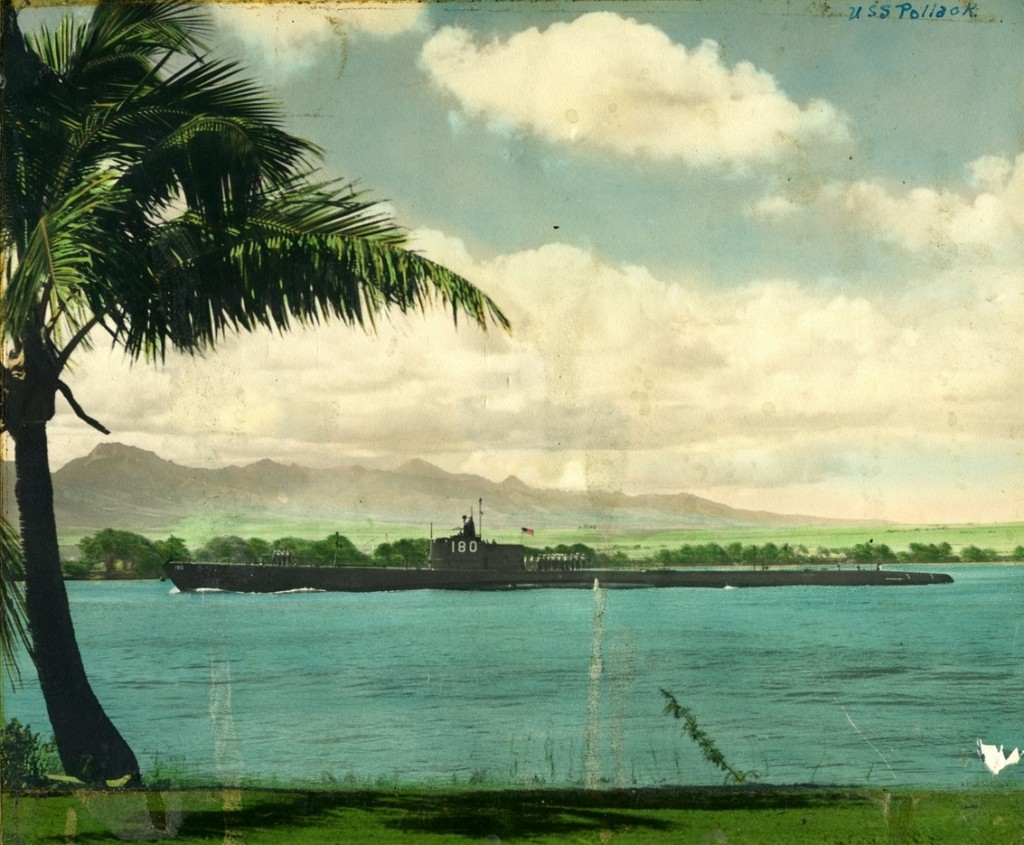Pacific War Spreads on Land & Sea

USS Pollack leaving Pearl Harbor. Gift of Jane Dickman Schlaht, The National WWII Museum Inc., 2011.124.028
While American and Filipino forces continued to retreat towards the Bataan Peninsula on Luzon, the US Navy slowly crept towards Japanese waters. On this day 70 years ago, the submarine USS Pollack (SS-180) damaged the Heijo Maru, a 2700-ton Japanese merchant ship. A few days later on the 7 January, the Pollack laid waste to the Unkai Maru, marking the first confirmed sinking of an enemy ship by the Submarine Force US Pacific Fleet. Thus began the incredible record of the Silent Service in World War II: though making up less than 2% of the entire US Navy, submarines managed to sink more than 30% of the entire Japanese fleet, and more than 60% of its Merchant fleet.
This post by Curator Meg Roussel
- Posted :
- Post Category :
- Tags :
- Follow responses to this entry through the RSS 2.0 feed. You can skip to the end and leave a response. Pinging is currently not allowed.
One Response to “Pacific War Spreads on Land & Sea”
Deborah Hvizdos says:
My Grandfather David Lutz was a SAILOR in WWII-here is a story my father told me about Tarawa~
“Grandpa Lutz kept a diary during WWII. In it he describes the actions in which he participated including the invasions of North Africa and Tarawa. During the landings at Tarawa a Japanese artillery round sunk the landing boat he was driving. Although wounded in the legs himself from shrapnel, he swam with a more seriously wounded Marine to a loading pier jutting out from the beach. They spent the night in the water under the pier until the next morning when another landing craft picked them up and took them back to their ship. Sometime in the late 90’s his left knee began to hurt, an x-ray revealed several BB size metal fragments in his leg one of which had made it’s way into his knee, and the doctor removed it. I asked Dad if he saved for me. “Naw”, he said, “already threw it away”. The doctors on the ship had told him the fragments were there, but were not life threatening, and with the thousands of more seriously wounded Marines and Sailors being returned to the ships they did not have time to remove them. Pull up a picture of Tarawa and you will see the pier he tells of in his diary. Several weeks later in Pearl Harbor, Hawaii I have the original picture of him being awarded a Purple Heart by his commanding officer (CO). These are usually somber occasions, but all the sailors in formation behind are laughing. I asked him why and in bravado typical of Grandpa Lutz he had asked his CO, “If this meant he got shore liberty”. I found that picture among my Mom and Dad’s personal belongings in their safe deposit box at the Alvin State Bank after they had both passed. On the back of the picture in Grandpa’s handwriting is a note he written describing the event. It was dated exactly 60 years earlier on that very day. Sitting alone in that safe deposit room with that picture, I broke down. I don’t know what happened to his Purple Heart (inscribed with the words, “For wounds received at Tarawa” or the bayonet he picked up in a Japanese pillbox there.” as told by my father Terry Lutz from David Lutz’ WWII diary



